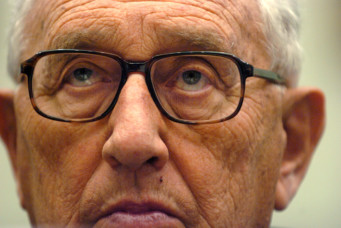October 6, 1973: The War for Peace

Over the years, we have dedicated the pages of the Cairo Review to commemorate historic milestones that have altered the course of events globally and regionally. Few such milestones can compare to the momentous and transformative impact of the 1973 October War on Middle East regional politics, as a major turning point in the Cold War, and as a defining case study in the diplomacy of war and peace.
This month marks fifty years since Egyptian troops broke through the Bar-Lev defensive line on the east banks of the Suez Canal. Since then, the Middle East has witnessed enormous change, yet, in many ways, we still live in a region defined by the legacy of what historians now refer to as “the last Arab–Israeli war”. After the watershed moment of October 1973, the prospect of peace was transformed from a distant hope to a tangible reality, through the careful and painstaking diplomacy that unfolded in the aftermath of the war.
Today, the historic peace that was forged between Egypt and Israel in 1979 still endures. Moreover, the October War brought an end to what appeared to be a perpetual cycle of large-scale regional conflicts. Indeed, after the largest tank battles since World War II were fought in the deserts of Sinai and the slopes of Syria’s Golan Heights, the Middle East has not witnessed a full-fledged armed conflagration that threatened to engulf the entire region. One can only speculate as to what the eight-year-long Iran–Iraq War, or the 1991 Gulf War, or the numerous conflicts between Israel and Lebanon and Gaza would have looked like in the absence of the peace established in the wake of the October War.
The countries that fought the war have seen their own share of transformative change— most recently, the Arab uprisings that convulsed Egypt and Syria, and Israel’s myriad political and identity conflicts revolving around the unsettled question of what it means to live in a “Jewish” state. However, the legacy of the 1973 October War continues to occupy a central place in their respective national narratives, and the fiftieth anniversary of that conflict will no doubt be an occasion for reflection and commemoration in each of these states.
Globally, the war was no less consequential. October 1973 was more than just another crisis in a long series of flashpoints that punctuated the Cold War. The war itself brought the United States and the Soviet Union close to a confrontation that prompted both to go on nuclear alert, thus giving us one of the most dangerous moments of superpower rivalry that was only narrowly averted. Perhaps more significantly, the war ushered in a decades-long era of American dominance in the Middle East. Washington’s deft diplomacy in the aftermath of the war solidified Egypt’s exit from the Soviet camp, and consolidated its role in Arab-Israeli peacemaking for decades to come. Despite the legacy of America’s long and entangled involvement in the region since, there is little doubt that it was in many ways enabled by the game-changing moment of October 1973.
For all these reasons, the legacy of the war continues to define the regional security and political landscape of today’s Middle East, fifty years since the guns of October 1973 fell silent. To reflect on that legacy, we asked a distinguished group of Egyptian, Israeli, Syrian, Russian, American, and Palestinian authors to offer their perspectives on the war. The essays that follow in this special issue of the Cairo Review are not meant to provide a historiography of the events related to the war from the different national outlooks of the authors. Rather, they offer a more analytical, and occasionally personal, perspective that assess how the war is remembered, and the lessons that should be drawn for the challenges of war and peace that confront today’s Middle East.
From our own perspective, perhaps the most important legacy of the war is that it offered a true example of statesmanship and statecraft, commodities that are sadly rare in Middle East politics. For all the remembrance of this occasion as an armed conflict, October 1973 was a testament to the limitations of military force, as well as to the reality that deep-seated conflicts can only be resolved by peaceful settlement. In going to war, Egypt’s late President Anwar Sadat aimed not to vanquish Israel militarily, but to shock Israel’s leaders from their sense of hubris that the status quo of unjust occupation could be sustained indefinitely by their military superiority. The ultimate objective was to alter Israel’s—and America’s—calculus in order to engage in diplomacy. October 1973 was ultimately a war waged for the sake of peace, an apt description that we chose as the title for this special issue.
It is our hope that the leaders of today’s Middle East reflect on this most important of lessons from the 1973 War, at a time when the desire to settle conflicts by force of arms still animates much of the region’s politics. In no conflict does this lesson apply more than in the case of Palestine, the longest-standing military occupation in modern history.
Cairo Review Co-Managing Editors,
Karim Haggag
Firas Al-Atraqchi





